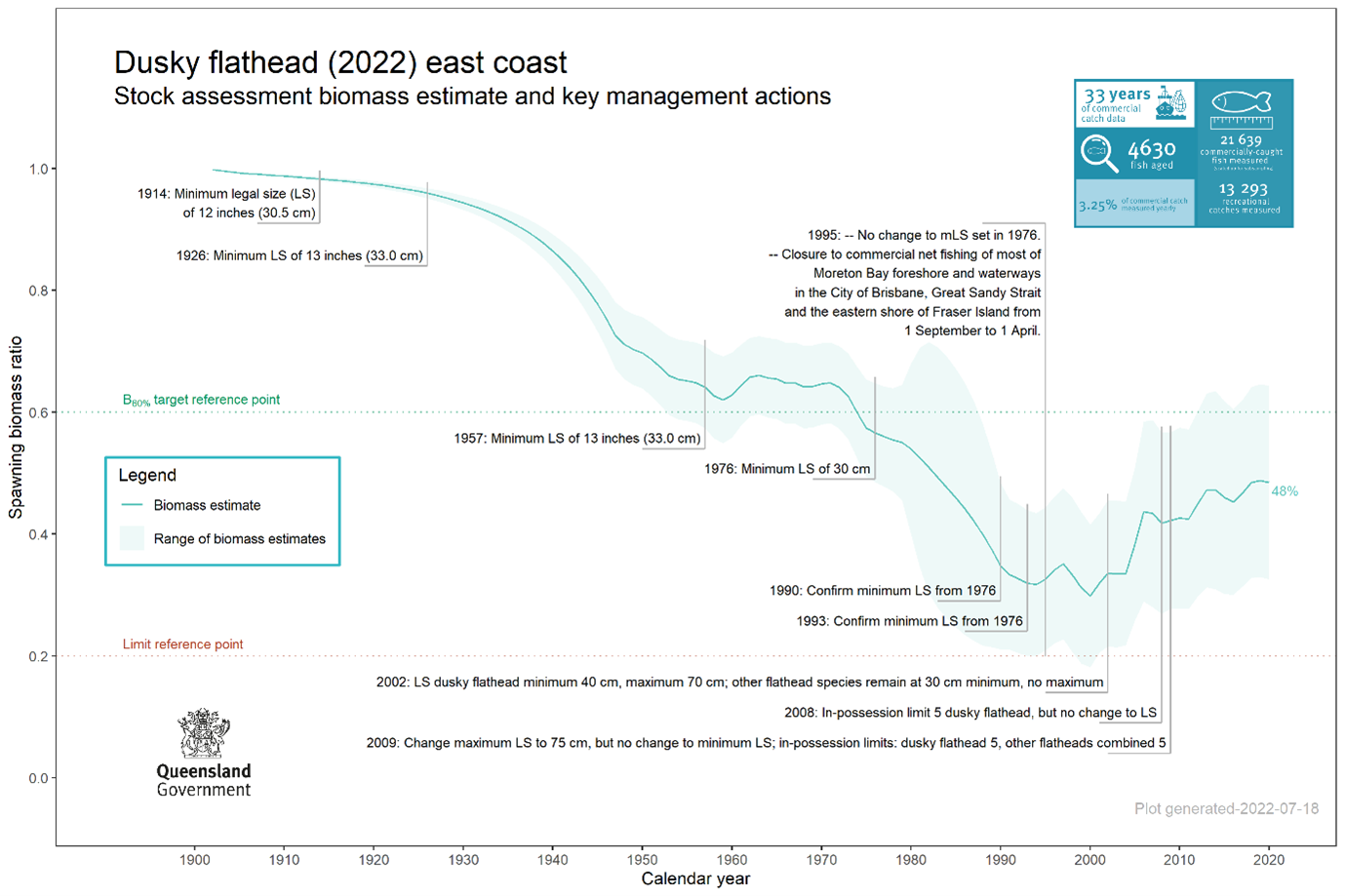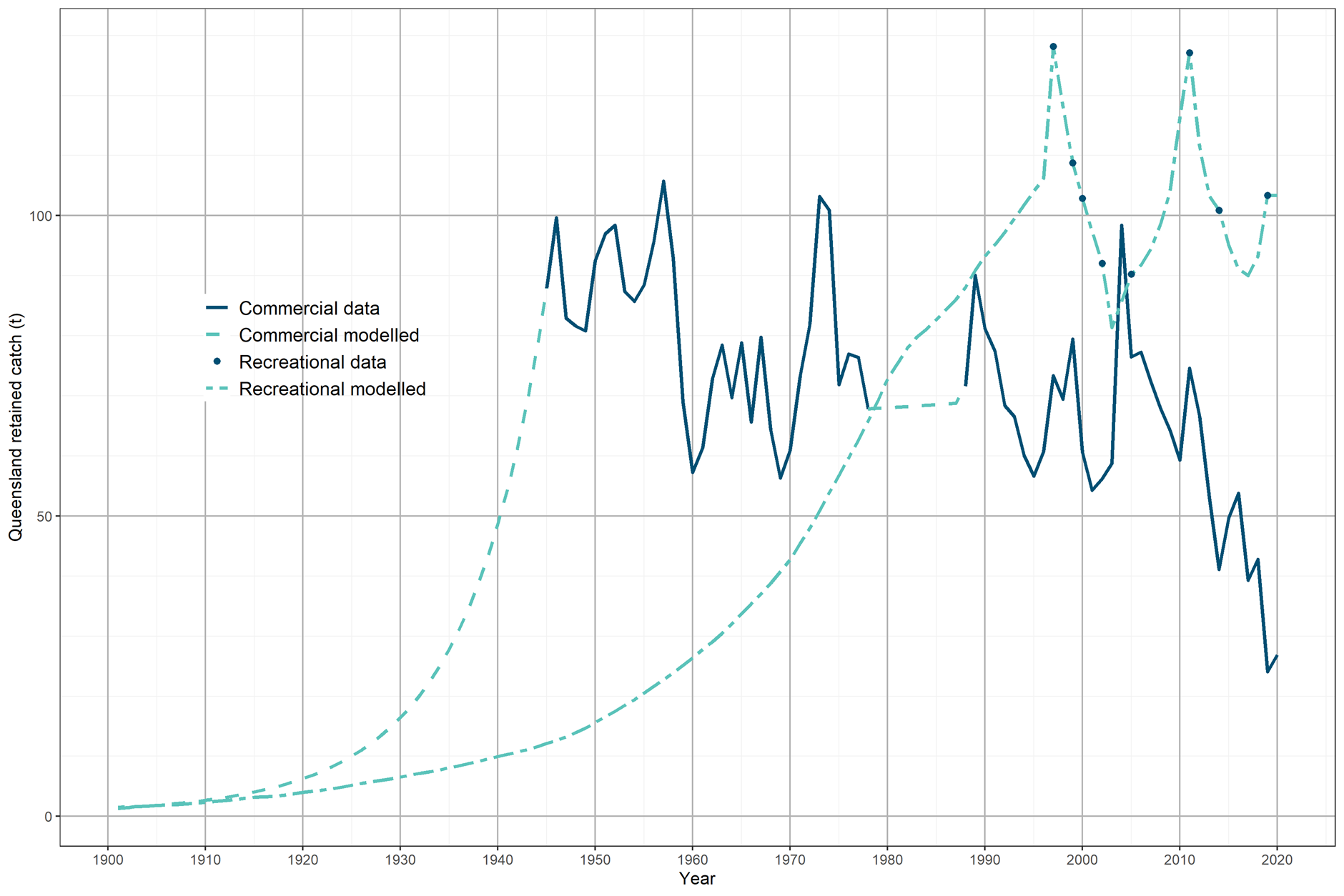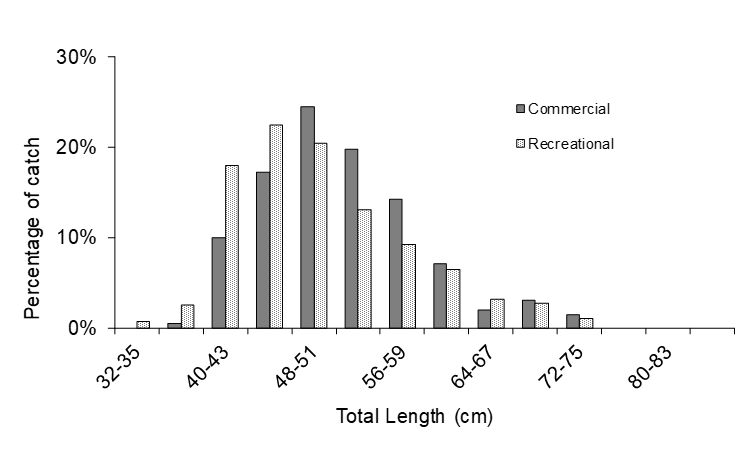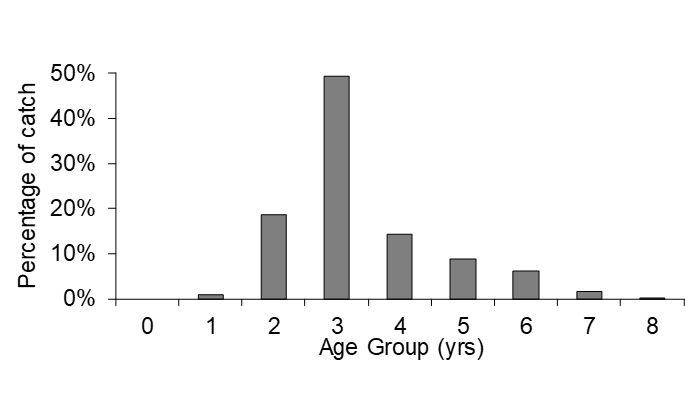Dusky flathead stock
Species
- Dusky flathead (Platycephalus fuscus)
Fish stock status
Although a species may be classified as sustainable under the Status of Australian Fish Stocks (SAFS) framework, this does not mean that the stock is meeting Queensland targets under the harvest strategy.
| Stock | 2023 | 2020 | 2018 | 2016 | 2014 |
|---|---|---|---|---|---|
| Queensland | Sustainable | Sustainable | Sustainable | Sustainable | Sustainable |
Stock assessment
The 2022 stock assessment used current biological data, and commercial and recreational catch data to:
- determine the sustainability of the stock
- help inform management decisions
- inform the development of a harvest strategy.
The assessment estimated that the dusky flathead stock level was between 31% and 62% of unfished levels, and most probably at around 46%.
The assessment used Stock Synthesis, a modelling framework that was developed by the National Oceanic and Atmospheric Administration (United States).
Previous reports:
Biomass estimates and key management actions
Estimated retained catch from 1901 to 2020
Monitoring
The biological monitoring program collects data on length, sex and age of fish caught by commercial fishers between Baffle Creek (north of Bundaberg) and the Queensland-New South Wales border.
Similar data is collected from recreational fishers through the boat ramp survey and Keen Anglers Program, only the study area extends to Cooktown.
Data collection began in mid-2006 and is ongoing.
Length
Dusky flathead are permitted to be harvested between 40cm and 75cm total length (slot limit). Most of the fish in this size range are females.
We measure about 1000 recreationally caught dusky flathead and about 2000 commercially caught dusky flathead each year.
Dusky flathead are most commonly harvested in the 40-60 cm size range (Graph 1).
Graph 1: Length frequency
Age
Whole otoliths of approximately 300 dusky flathead are examined to determine their age. The age is analysed along with fish lengths from the same year to determine the percentage of fish in each age group within the dusky flathead harvest (also referred to as the age structure of the harvest). Results show that the recreational and commercial fishery sectors have very similar harvested age structures.
Dusky flathead can live for more than 10 years, but they are most commonly harvested as 3 year olds (Graph 2). Fish which are 7 years or older are less common in the harvest due the protection afforded by the maximum size limit i.e. some 7 year old fish have lengths over the 75cm maximum size limit.
Graph 2: Age frequency
Ecological risk assessment
Assessed in the east coast inshore fishery.
Management
East coast inshore fishery:




